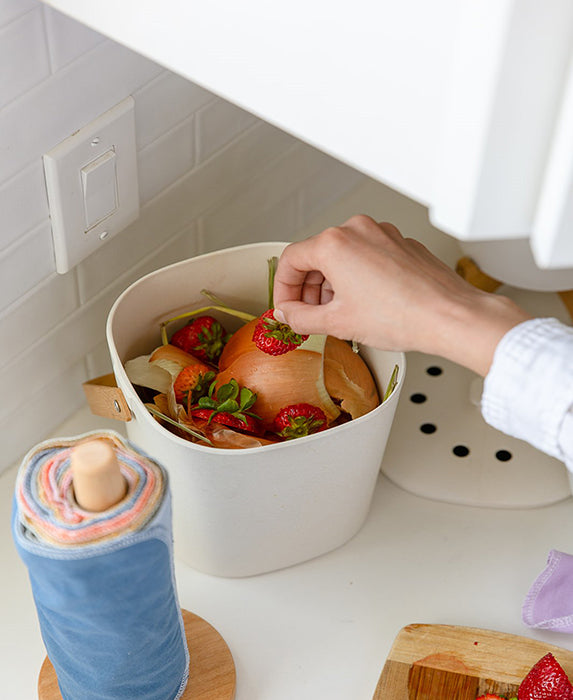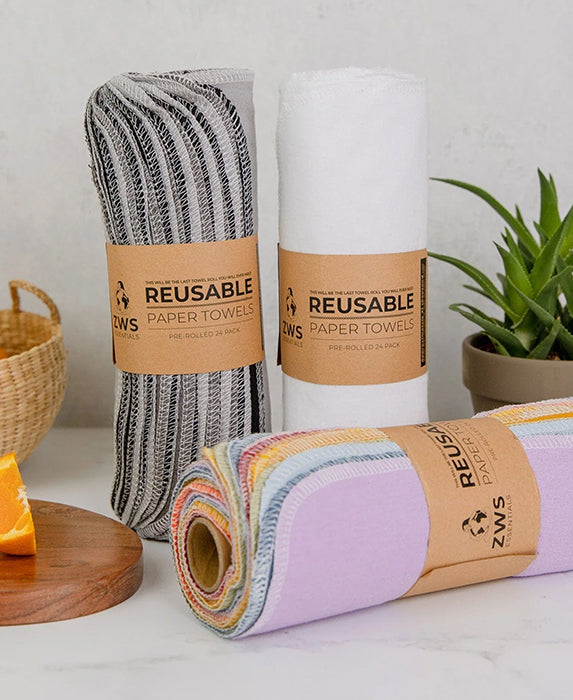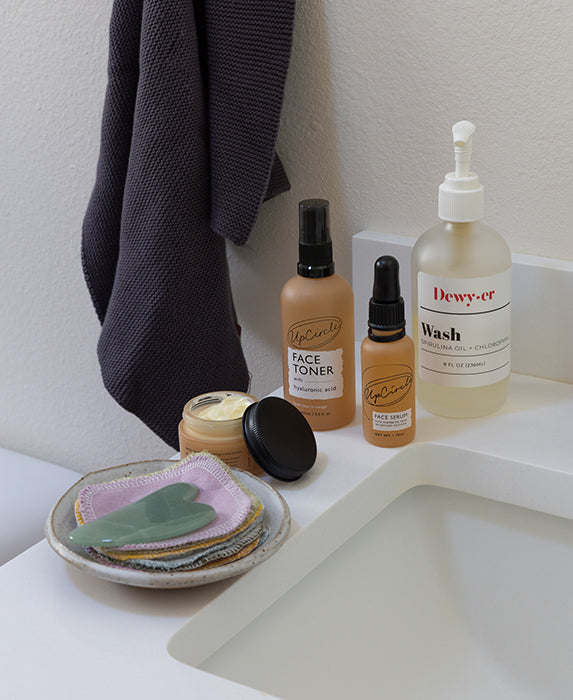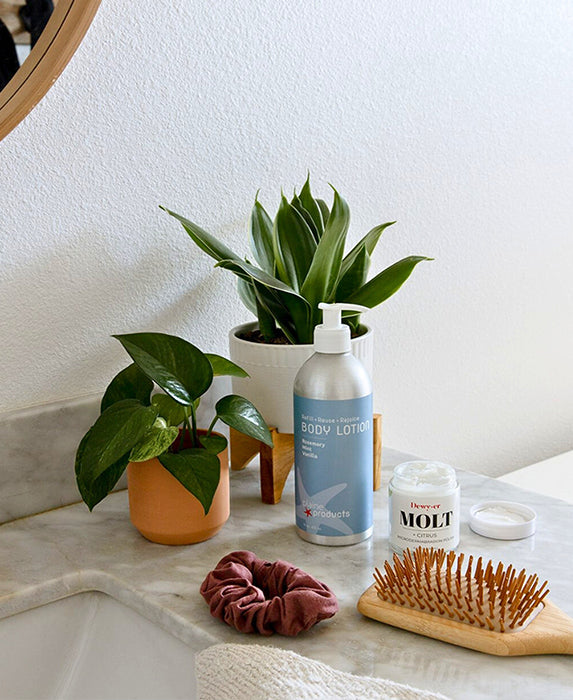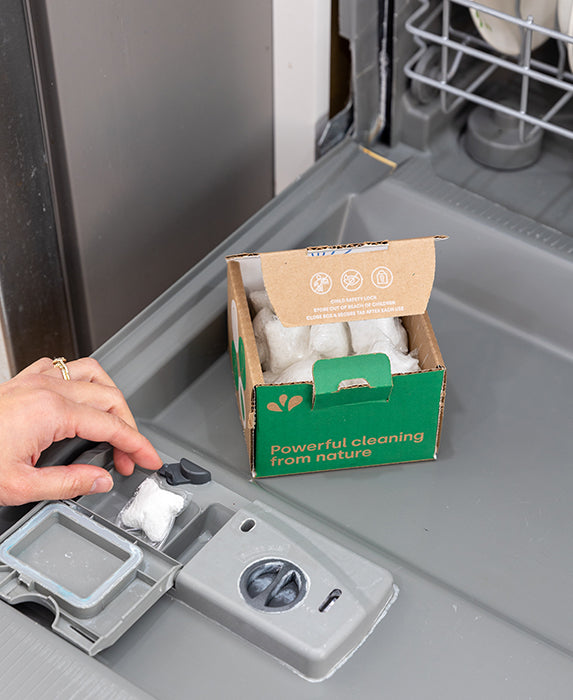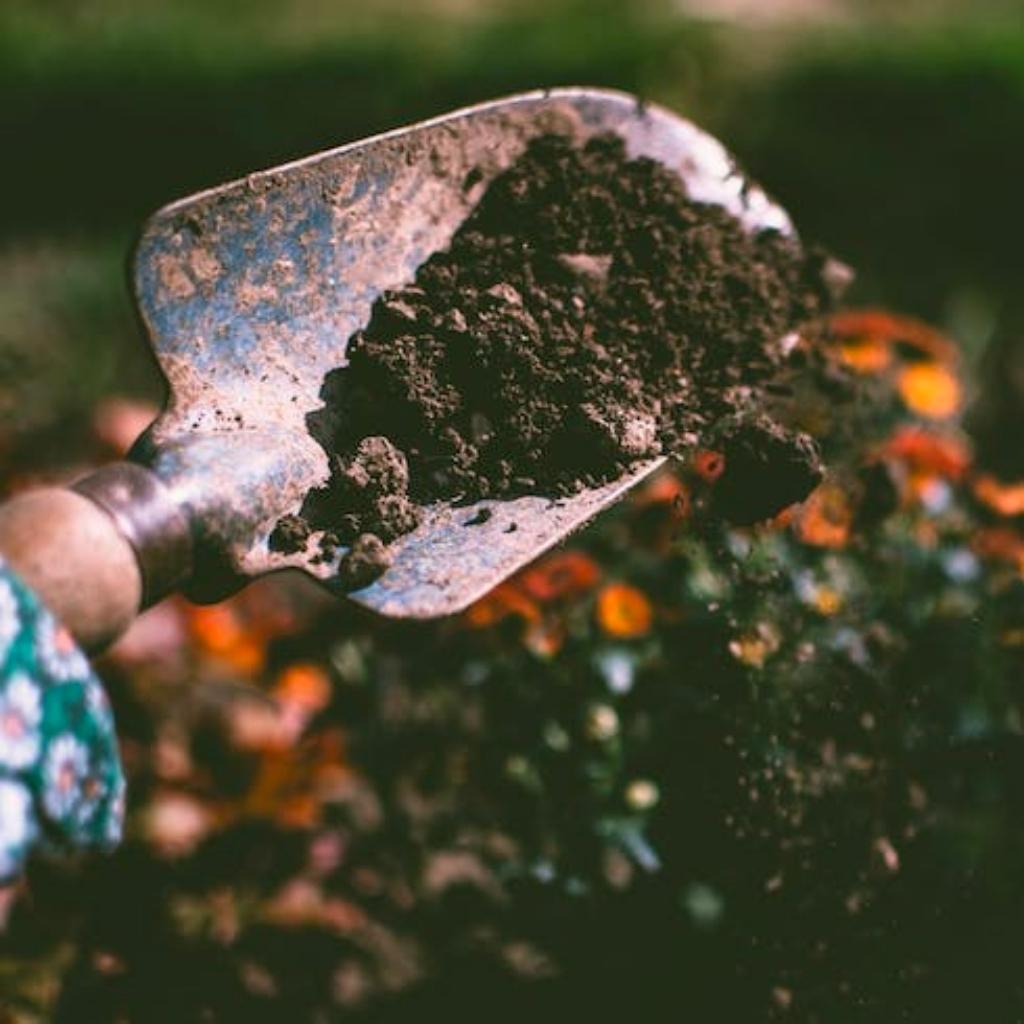Fact: food scraps and other organic waste currently makes up 30% of what we throw away every year, where it will sit in our landfills unable to decompose properly–but there is a better way to toss organic waste. Composting has become a major trend in environmentalism, with restaurants, some grocery stores, even very special office spaces participating! So what’s the deal with composting, and how can it make a massive impact on our planet’s waste situation? Read on to learn why it’s changing the planet for the better–and how you can get involved.
What you’ll learn:
- What the difference between commercial and backyard composting is
- Why composting and food waste are an environmental issue, and how you can get involved
- Products to help you on your composting journey
Why should I compost?
Whether you’re trying to have the most nutritious soil on the block, or if you’re just looking for another way to lower your carbon footprint, composting your leftover food and organics is the move. While it’s true that food will eventually biodegrade in our landfills, there are some seriously nasty side effects that come with it.
When organic materials break down in a landfill, they do so “anaerobically“, or without oxygen. When compost is unable to break down naturally, it actually leads to the release of very harmful greenhouse gas: methane. Believe it or not, methane has heat-trapping capabilities that are 25 times that of carbon dioxide (yikes!)–and is linked to global climate impacts, as it traps heat in our atmosphere. By diverting organic waste from our landfills, and into commercial or home composting piles, we can greatly reduce the amount of methane gas emissions that come from landfills, which can directly (and positively) impact the levels of greenhouse gases in our atmosphere.
Here’s what composting can do for you!
- You get to take your trash out less! Keeping food waste out of your trash can mean fewer trips to the curb! If you pay for garbage pick up, composting could decrease how much “trash” needs to picked up by the garbage truck (and that equals more money in your pocket).
2. No more smelly trashcans. Keep compost in a designated bin, such as this snazzy, stainless steel one or this recycled plastic one! Both of these bins have aeration holes which help neutralize unwanted scents, too! *More tips for smell-free composting are below!
3. Into gardening? While store-bought fertilizers can be pricy, your leftover food is chock full of nutrients (and it’s free!) Try out backyard compost to create your own nutrient-rich, chemical-free soil.
Backyard Composting vs. Commercial Composting
So you’ve decided to start composting and stop throwing food in the garbage. But, depending on where you live, there might be different rules or regulations for what can be commercially composted–or there might not be any city-wide compost at all, which is a great reason to start your own backyard compost.
Commercial Composting: The breakdown
Commercial composting is a great option if you want to divert your organic waste but don’t have the time or space to maintain your own outdoor compost pile. This method often means decomposition happens more quickly AND ensures that bioplastics (think corn-based cups and plates) definitely break down.
It’s important to find out which foods and materials are acceptable to compost in your city. This differs from facility to facility but it’s good to steer clear of adding things like pet waste, liquids, dirt, or rocks.
There are typically three techniques used in commercial composting:
Windrow: This open-air process is primarily used for yard and garden waste and involves five-foot-high piles (“windrows”) that get regularly turned. Turning encourages decomposition and helps ensure that every layer has a chance in the warm center of the pile, where all the good bacteria hang out.
In-vessel: This is an enclosed space setup which means it can process all forms of organic waste, from meat and other food scraps to manure and bio-plastics (with no bad smells!). This system allows for optimal control of temperature, moisture, and airflow regulation and also means the compost is ready within a few months. In-vessel composting is able to reach incredibly high temps (over140 degrees) and this helps kill off harmful bacteria!
Aerated-static pile: This system is optimal for large generators of homogeneous organic waste, so it is likely the option found in cities and towns with a commercial compost facility. The aeration process employs bulking agents like wood chips and shredded newspaper and also a network of pipes that periodically blow air into the pile. Food waste, paper products, and bioplastics are traditionally what goes into these piles and compost production is fast, typically only taking a few months.
If you're looking for a compost bin or compostable bags, check out some of our options here.
DIY: Backyard composting
Creating your own home & backyard compost is great, especially if you’re trying to save money on soil fertilizer. It also means you have greater control over what goes in. If you’re into gardening, you can really tailor your compost to the nutritional needs of your own soil and garden. For example, if an organic garden is important to you, make sure the compost is comprised of all things organic, too!
Here’s how to start your backyard compost:
- Step 1: Begin by finding a shady spot on your land. Close proximity to a water source can be helpful, as moistening any dry compost additions can help the microbial processes. The ideal size of your pile or bin is 1 cubic yard, as that will allow enough space to hold in heat without keeping our air.
- Step 2: For the best compost, you’ll want to combine two parts “brown” (dry leaves and twigs, for example) with one part “green” (grass clippings and your food scraps). This recipe results in a perfect blend of nitrogen and carbon.
- Step 3: Chop up your large veggies or big sticks, to help them decompose more quickly!
- Step 4: Turning over the compost regularly will help air and moisture move throughout the pile and will help break up any clumps of organic material.
- Step 5: Depending on outside temperature, your nutrient dense, natural fertilizer will be ready within in 2-5 weeks and will only continue to gain potency as time goes on!
Countertop compost bins: What to look for
So, you’ve chosen your compost method–great! Now make it a little easier on yourself and choose the perfect countertop compost bin to store your scraps between they head to the compost pile or curbside bin. But there are so many options! Here are some pros and cons of our favorites:
- This bin attaches to the edge of the counter so that sweeping food scraps away is a snap, plus silicone is an excellent alternative to plastic. It also fits neatly into the door of your freezer, which is an excellent storage location for compost–frozen food doesn’t smell!
- Need a little more room? This 1.3 gallon stainless steel bin is super easy to clean, and adds a classy look to any kitchen! The lid holds a charcoal filter as well, so it’s a great odor-reducer as well!
- Looking for more functionality, less fancy? This 1.5 gallon bin comes with a release button that pops the top open, making it easy to open and close quickly. Plus, it has a bar that holds your compost bag in place, so you’ll never have to worry about losing the corner of your bag under an old banana peel!
Tips for Success
- Worried about the smell? Keep your bin in the freezer. This is a particularly useful tip during those hot and humid summer months when it seems like even your fresh food is excited to decompose.
- Add a slice of lemon to neutralize any bad smells. That detoxifying morning lemon water now has another purpose!
- Keep charcoal filters near the bin. This is especially helpful if you have a larger bin because these filters seriously stretch the time between when the compost needs to be taken out.
- How will my family know what to compost? Coffee grounds are basically compost gold, but chicken bones? Not so much. Here’s a simple guide we really like. Gardening? Check this out for the best DIY compost fertilizer! Also read our tips on how to reduce your food waste in general.
Reduce, Reuse, Recycle, Rot
If composting is out of the picture for you right now, either due to location, space, or time, there are other ways you can get on board. Choosing compostable items such as bags and dishware means less plastic gets used and discarded. While we love reusable choices whenever possible, compostable plates and utensils definitely come in handy during travel or on a picnic. However, Earth Hero’s beware! Not all biodegradable dishware is created equal! Some require extremely high temperatures in order to break down completely, and not all commercial compost facilities are able to reach this high heat. These bowls, plates, and utensils are great options because they can all break down in backyard soil!
Composting Starter Essentials
Whether you’re looking for recycled plastic, silicone, or stainless steel, EarthHero has a bin for you! These are all small enough to hang out on your kitchen counter or even in your freezer and have aeration holes to promote decomposition and keep smells at bay.
Line your compost bin or trash can with compostable bags and help keep one less plastic bag out of the landfill. Even your dog can be zero-waste with these compostable dog-waste bags! Since pet waste can contain parasites, it’s best to be sure it never ends up in any actual compost piles.
Don’t just stop composting there, bring composting into every aspect of your life with compostable products like fun straws and food wraps. Even these amazing body products come in compostable packaging!
Additional Resources
Making Composting Understandable for Kids
How to Start a Compost Pile in Your Backyard
This blog was originally published on January 23, 2019, and was last updated on March 31, 2023.

